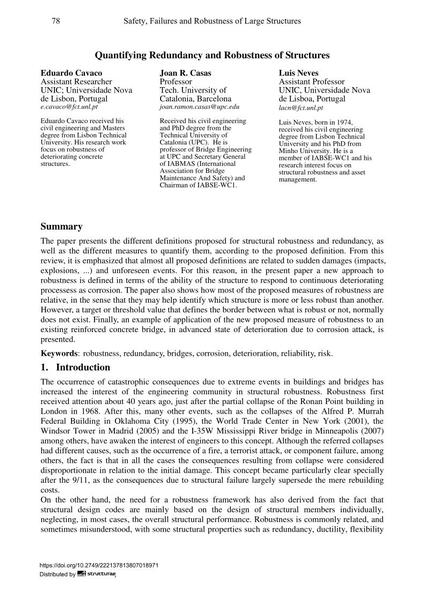| Medium: |
conference paper |
| Language(s): |
English
|
| Conference: |
IABSE Workshop: Safety, Failures and Robustness of Large Structures, Helsinki, Finland, 14-15 February 2013 |
| Published in: |
IABSE Workshop, 14-15 February 2013, Helsinki |
|
Page(s):
|
78-99
|
Total no. of pages: |
22 |
|
|
Page(s):
|
78-99
|
| Total no. of pages: |
22 |
| Year: |
2013 |
| DOI: |
10.2749/222137813807018971 |
|
Abstract:
|
The paper presents the different definitions proposed for structural robustness and redundancy, as well as the different measures to quantify them, according to the proposed definition. From this review, it is emphasized that almost all proposed definitions are related to sudden damages (impacts, explosions, ...) and unforeseen events. For this reason, in the present paper a new approach to robustness is defined in terms of the ability of the structure to respond to continuous deteriorating processess as corrosion. The paper also shows how most of the proposed measures of robustness are relative, in the sense that they may help identify which structure is more or less robust than another. However, a target or threshold value that defines the border between what is robust or not, normally does not exist. Finally, an example of application of the new proposed measure of robustness to an existing reinforced concrete bridge, in advanced state of deterioration due to corrosion attack, is presented.
|
|
Keywords:
|
bridges robustness reliability corrosion redundancy risk deterioration
|

